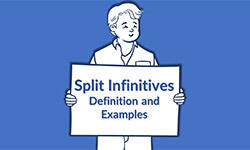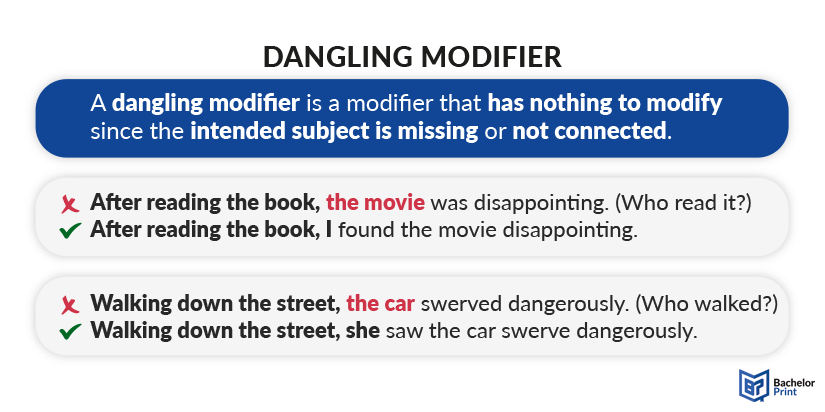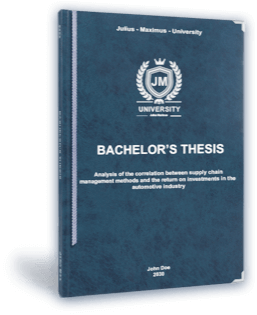
A dangling modifier is a common grammatical error that occurs when a modifying phrase or word in a sentence is unclear or ambiguously linked to the noun it’s supposed to modify. This typically results in a sentence that can be confusing or even illogical. Developing an understanding of dangling modifiers and the methods to detect and correct them is an essential part of mastering written English language rules.
Definition: Dangling modifier
A dangling modifier is a descriptive word or phrase, typically at the beginning of a sentence, that isn’t clearly or logically connected to the noun it’s meant to modify. This usually happens because the noun is missing from the sentence or the modifier is placed too far from it.

How to find a dangling modifier
To identify a dangling modifier, it’s important to pay attention to its placement in the sentence and check if it’s clearly linked to the noun it’s modifying. A sentence that has been modified correctly should position the modifier so that it accurately describes a noun, meaning the subject should shortly follow the comma after the modifier as seen in the example below.
How to fix a dangling modifier
There are two main methods for fixing a dangling modifier:
- Revising the main clause
- Revising the modifier clause
Revising the main clause
This method involves rephrasing the sentence in a way that the modifier will be linked clearly to the noun it is modifying. It can be done by reordering the sentence structure or adding a subject to the sentence.
Revising the modifier clause
A modifier clause is a clause that modifies or describes a noun or verb in the sentence. The modifier clause must be placed close to the noun or verb it is modifying to avoid confusion and to ensure proper grammar.
numerous advantages for Canadian students:
- ✓ 3D live preview of your configuration
- ✓ Free express delivery for every order
- ✓ High-quality bindings with individual embossing

FAQs
A dangling modifier example is the sentence “Walking to the store, the ice cream melted in my hand.” Here, “walking to the store” is meant to describe the person walking, but it mistakenly seems to describe “the ice cream” since the intended subject is missing.
You know you have a dangling modifier if the modifier doesn’t clearly link to a specific noun in the sentence. Ask yourself, “Who or what is being described by this modifier?” If the subject of the main clause doesn’t match up logically with the modifier, it’s likely dangling.
A dangling modifier is created when the intended noun or subject that the modifier is meant to describe is absent from the sentence. This creates confusion or makes the sentence sound awkward.
You can either revise the main clause or revise the modifier clause.
So, rearrange the sentence to make sure the modifier is clearly linked to the subject in the main clause, or change the modifier clause to directly connect with the subject.